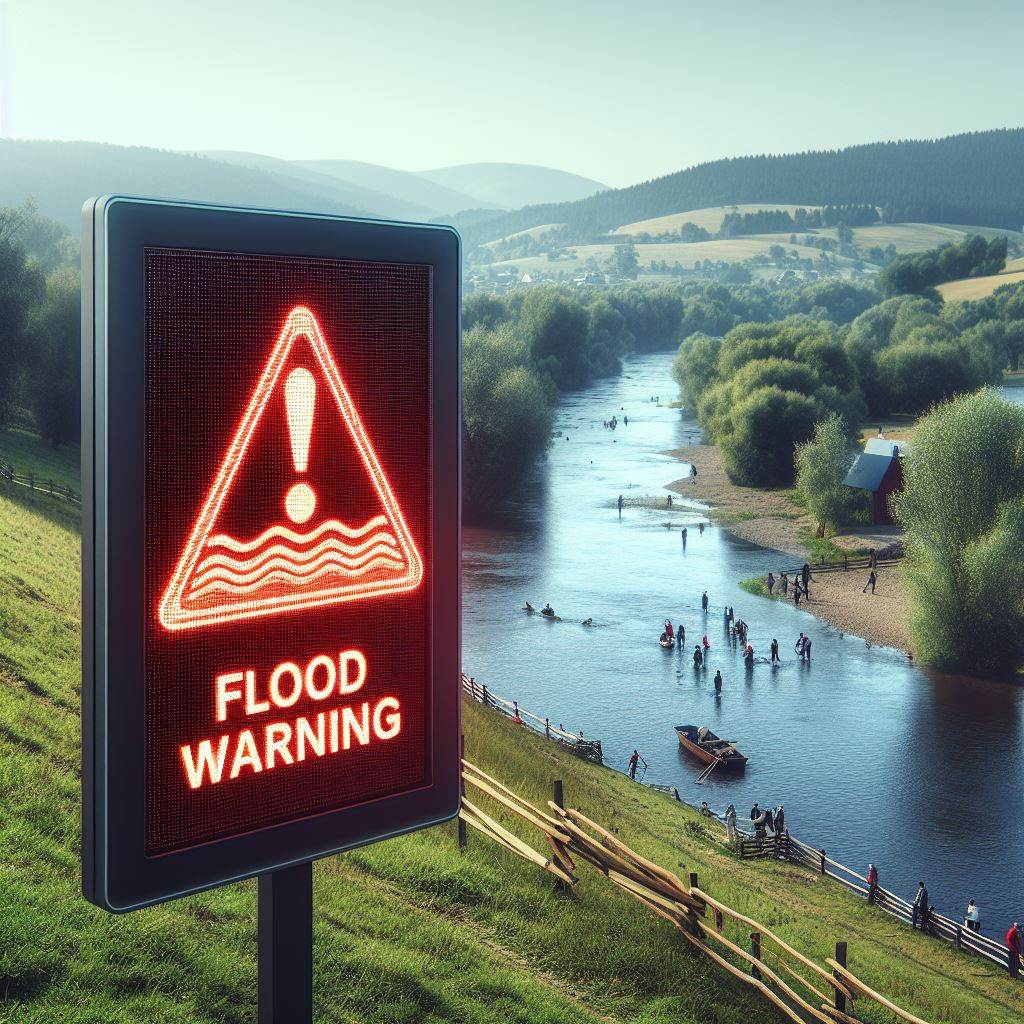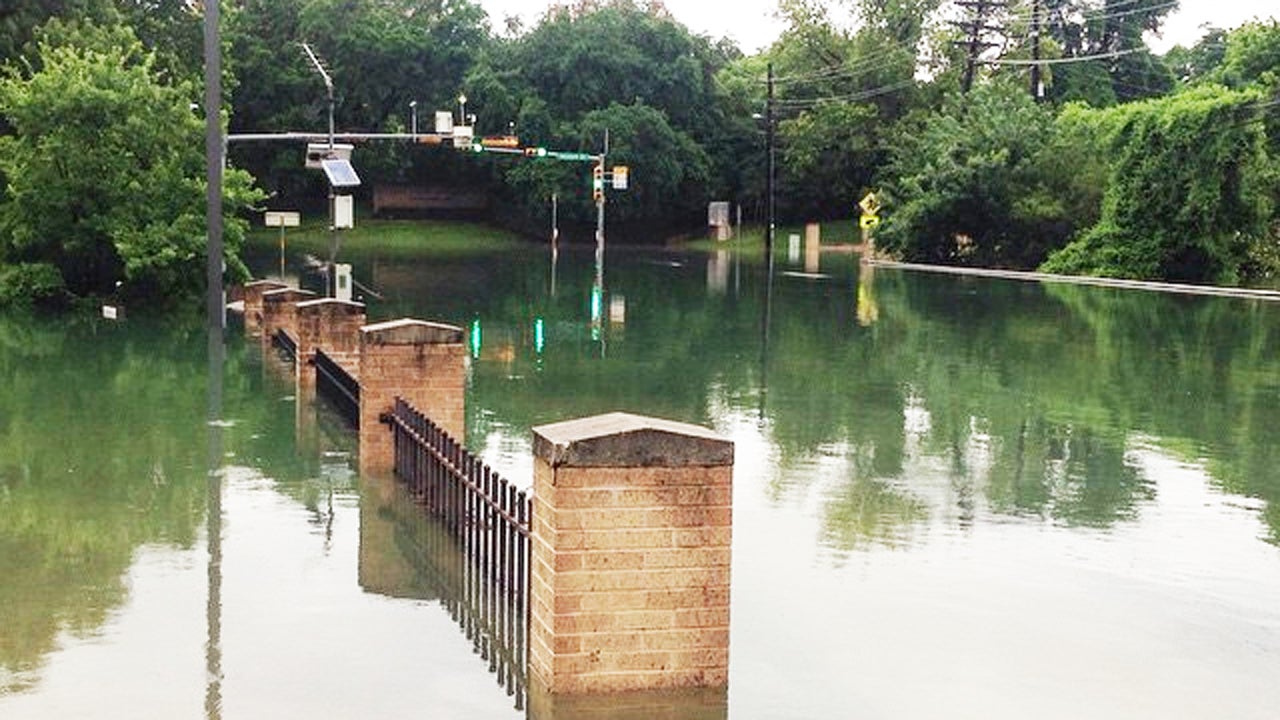What Are Flood Alerts? A Guide To Understanding And Responding

Table of Contents
Understanding Flood Alert Systems
What are Flood Alerts?
Flood alerts are warnings issued by meteorological agencies and government bodies to inform the public about the potential for flooding in specific areas. They provide crucial information to help individuals and communities prepare and take necessary precautions. These alerts are vital for mitigating the impact of floods and saving lives.
- Alerts indicate the likelihood and severity of flooding, ranging from a low chance of minor flooding to a high probability of severe, life-threatening inundation.
- They are based on weather forecasts, river levels, rainfall data, and other relevant hydrological information, using sophisticated predictive modeling.
- Different countries and regions may have varying systems and terminology for flood alerts, so it's important to familiarize yourself with the system in your area. For example, some regions may use terms like "flood watch," "flood warning," and "severe flood warning," while others may employ different designations.
Types of Flood Alerts
Many systems use a tiered approach to classify the severity of flood alerts. Understanding these levels is critical in determining the appropriate response.
- Flood Watch: Conditions are favorable for flooding. Monitor the situation closely and be prepared to take action if necessary. This is often the first stage of an escalating alert.
- Flood Advisory: Flooding is occurring or is imminent. Take precautions and be aware of potential hazards.
- Flood Warning: Flooding is occurring or is imminent, and immediate action is required. This indicates a significant threat to life and property.
- Severe Flood Warning (or similar): This indicates a life-threatening situation with widespread and catastrophic flooding. Immediate evacuation is typically necessary.
Sources of Flood Alerts
Knowing where to find reliable flood information is essential for staying safe. Multiple sources offer vital alerts:
- National meteorological services: Organizations like the National Oceanic and Atmospheric Administration (NOAA) in the US, the Met Office in the UK, and similar agencies worldwide provide detailed forecasts and alerts.
- Local government websites and emergency services: Your local government's website and emergency services (e.g., fire department, police) will often issue specific alerts for your area. These may be more localized than national alerts.
- Mobile phone apps: Many weather apps and emergency alert systems (such as those integrated into your phone's operating system) send push notifications for flood alerts.
- News media and social media: While these can provide updates, it is crucial to verify information from official sources before taking any action. Avoid spreading unconfirmed information.
Responding to Flood Alerts
Actions to Take During a Flood Alert (or Advisory)
Proactive measures are crucial even at lower alert levels.
- Monitor river levels and weather reports regularly: Keep a close eye on official forecasts and updates.
- Prepare an emergency kit: Include essential supplies such as food, water, medications, first-aid supplies, important documents (stored in waterproof containers), and warm clothing.
- Move valuable items to higher ground: This helps to protect them from potential water damage.
- Identify evacuation routes and safe locations: Familiarize yourself with the designated evacuation routes in your area and identify potential shelters or safe locations to go to.
- Charge all electronic devices: Ensure your phones, tablets, and other devices are fully charged in case of a power outage.
Actions to Take During a Flood Warning (or Severe Warning)
Immediate action is necessary when a flood warning is issued.
- Evacuate immediately if instructed by authorities: Obey official evacuation orders without delay. This is crucial to your safety.
- Do not attempt to drive through flooded areas: Even shallow water can hide unseen hazards and lead to dangerous situations.
- Seek higher ground: If evacuation isn't possible, move to the highest point in your home or building.
- Follow instructions from emergency services: Pay close attention to and obey the guidance of emergency responders.
- Stay informed about the evolving situation: Continue monitoring updates from official sources.
Protecting Your Property from Floods
Floodproofing Your Home
Long-term preventative measures can significantly reduce flood damage.
- Install flood barriers or flood gates: These physical barriers can help prevent water from entering your home.
- Elevate electrical outlets and appliances: This protects them from water damage.
- Use waterproof materials in vulnerable areas: Consider using waterproof materials in basements or other areas susceptible to flooding.
- Consider flood insurance: This can provide crucial financial protection in the event of flooding.
- Plant trees and vegetation to help manage water runoff: Landscaping can help to absorb excess water and reduce the risk of flooding.
Community Preparedness
Community involvement is essential for flood resilience.
- Participate in community flood preparedness initiatives: Your local government or community groups may offer workshops or resources on flood preparedness.
- Know your neighbors and establish communication channels: Building a strong community network can enhance mutual support during emergencies.
- Support local flood mitigation projects: Supporting projects that reduce flood risk in your community protects everyone.
Conclusion
Understanding and responding effectively to flood alerts is paramount for safeguarding lives and minimizing property damage. By understanding the different types of flood alerts, knowing where to find reliable information, and taking proactive measures, you can significantly reduce your vulnerability to flooding. Stay informed, prepare a plan, and always heed the advice of official sources when a flood alert is issued. Remember, early preparation is key to effectively managing the risks associated with flood alerts and flood warnings. Don't wait for a crisis; take action today to protect yourself and your community from the devastating impact of floods. Develop your personal flood alert plan now.

Featured Posts
-
 Frankfurt Stock Exchange Dax Ends Trading Below 24 000 Points
May 25, 2025
Frankfurt Stock Exchange Dax Ends Trading Below 24 000 Points
May 25, 2025 -
 South Florida Flash Flood Warning Heavy Rainfall And Urgent Safety Advice
May 25, 2025
South Florida Flash Flood Warning Heavy Rainfall And Urgent Safety Advice
May 25, 2025 -
 Flash Flood Warnings Issued April 2025 Tornado Count Update April 4 2025
May 25, 2025
Flash Flood Warnings Issued April 2025 Tornado Count Update April 4 2025
May 25, 2025 -
 Planning Your Country Escape Considerations For A Relaxing Getaway
May 25, 2025
Planning Your Country Escape Considerations For A Relaxing Getaway
May 25, 2025 -
 Amundi Msci World Catholic Principles Ucits Etf Acc A Guide To Its Net Asset Value Nav
May 25, 2025
Amundi Msci World Catholic Principles Ucits Etf Acc A Guide To Its Net Asset Value Nav
May 25, 2025
Latest Posts
-
 Alex De Minaurs Madrid Open Exit Straight Sets Defeat And Swiateks Victory
May 25, 2025
Alex De Minaurs Madrid Open Exit Straight Sets Defeat And Swiateks Victory
May 25, 2025 -
 Grand Slam Debut Alex Eala Set For Paris
May 25, 2025
Grand Slam Debut Alex Eala Set For Paris
May 25, 2025 -
 Ealas Grand Slam Debut In Paris A Look Ahead
May 25, 2025
Ealas Grand Slam Debut In Paris A Look Ahead
May 25, 2025 -
 Naomi Campbells Future At The Met Gala Uncertain Amid Wintour Dispute
May 25, 2025
Naomi Campbells Future At The Met Gala Uncertain Amid Wintour Dispute
May 25, 2025 -
 Naomi Campbells Potential Met Gala 2025 Absence The Anna Wintour Conflict
May 25, 2025
Naomi Campbells Potential Met Gala 2025 Absence The Anna Wintour Conflict
May 25, 2025
